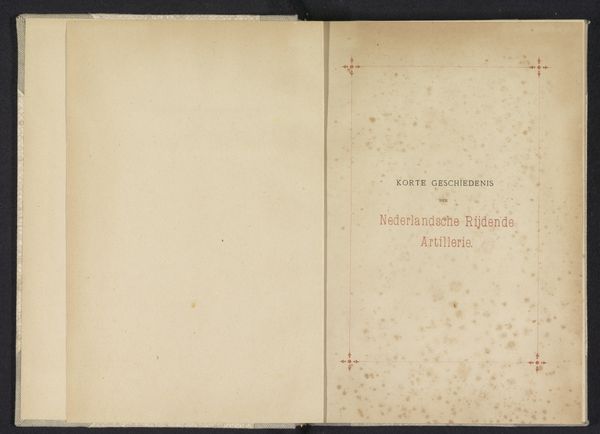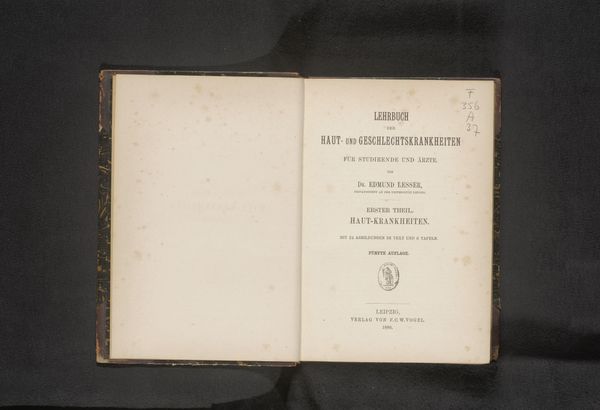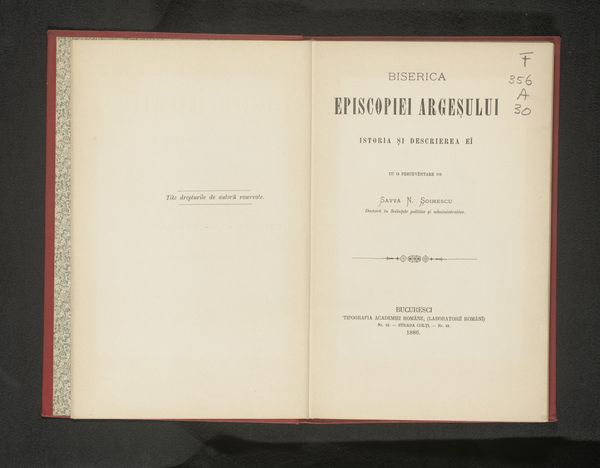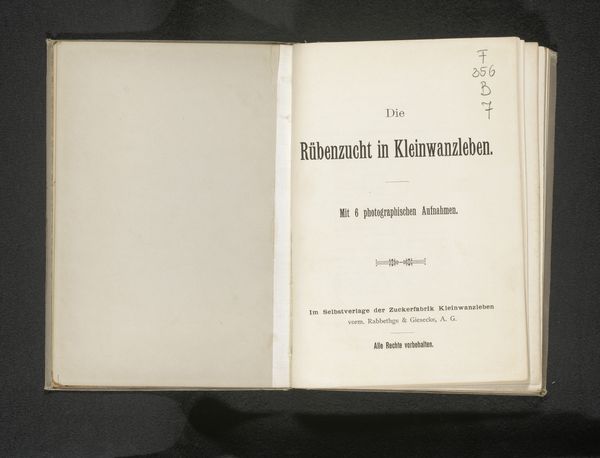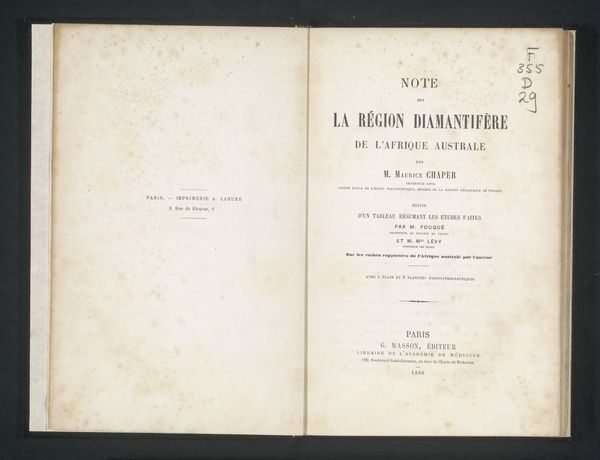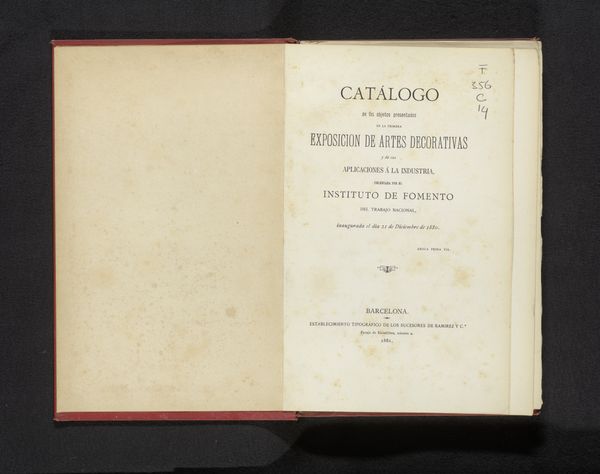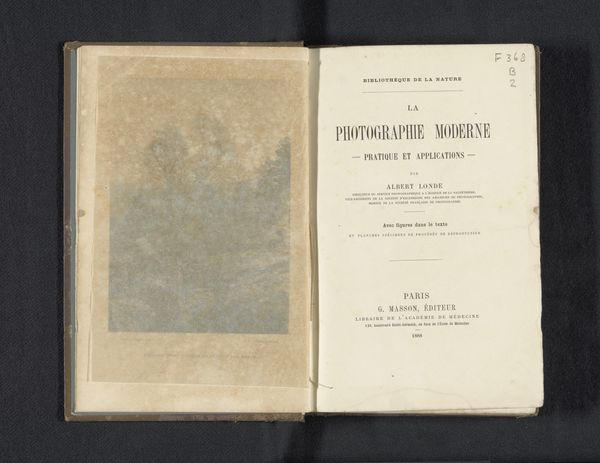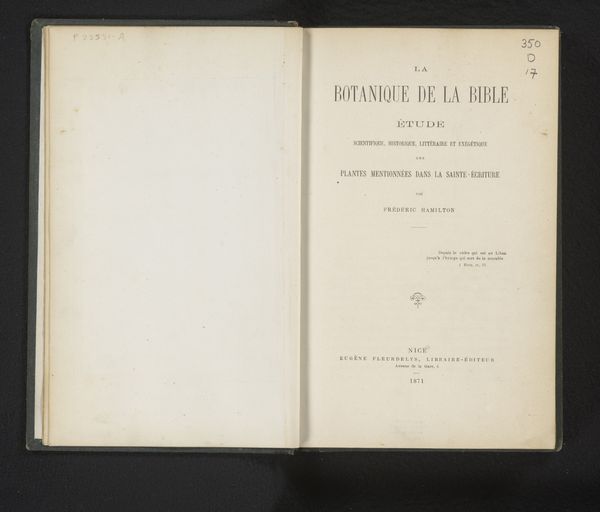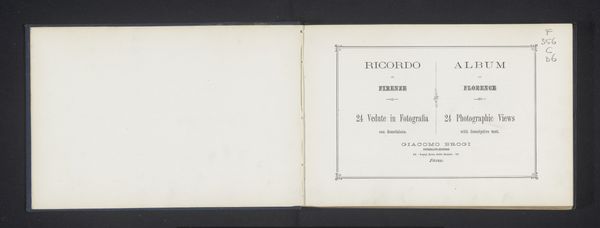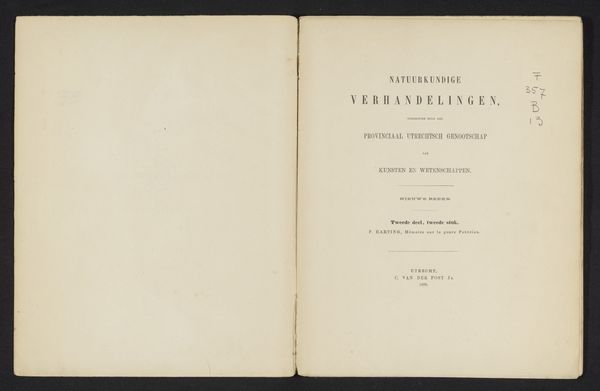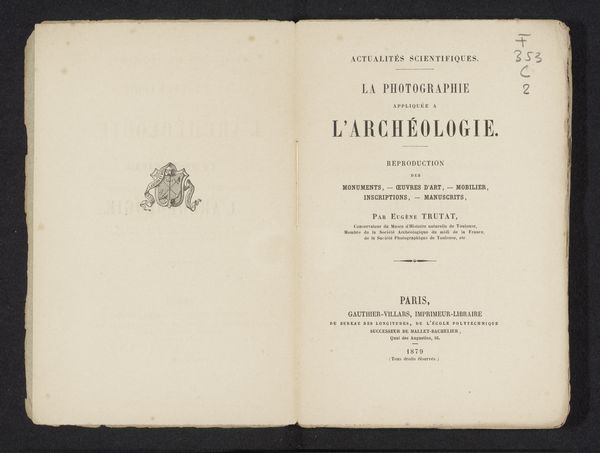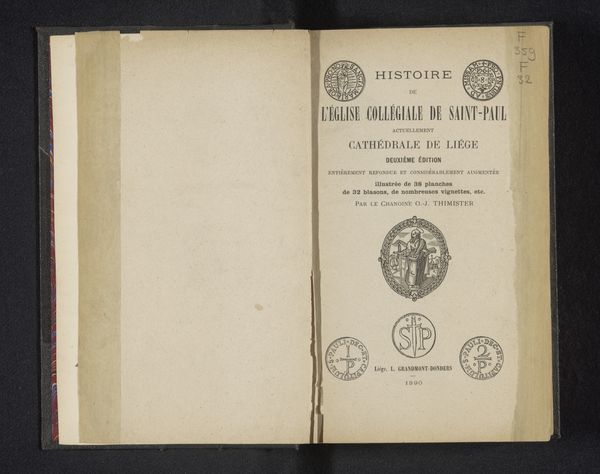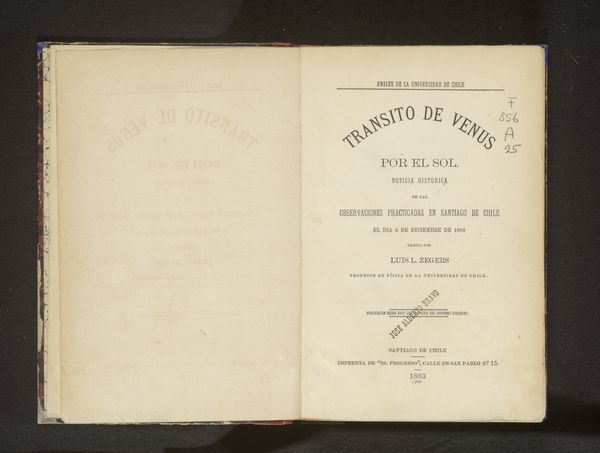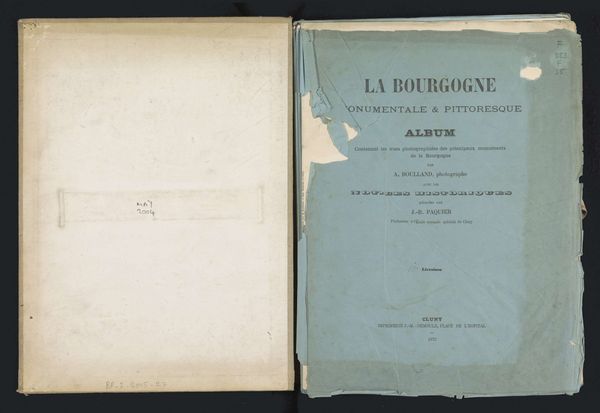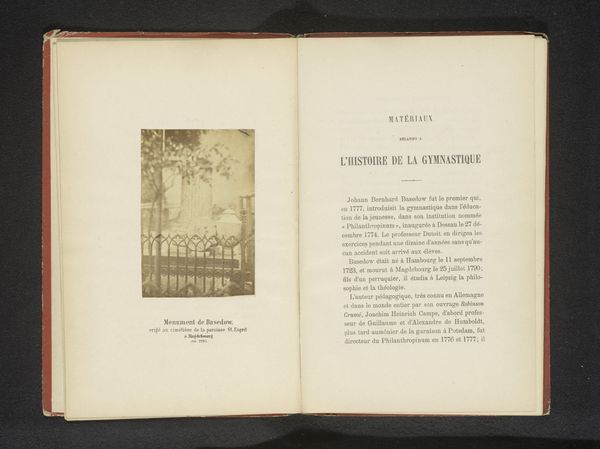
Esboço biographico offerecido saudosa memoria do presbytero Joaquim Vital da Cunha Sargedas orador sagrado e regentedo coro dos capellâes cantores da Sé Patriarchal de Lisboa 1878
0:00
0:00
print, paper, typography
#
portrait
#
aged paper
#
homemade paper
#
script typography
# print
#
hand drawn type
#
personal journal design
#
paper
#
personal sketchbook
#
typography
#
journal
#
fading type
#
stylized text
#
thick font
#
history-painting
Dimensions: height 212 mm, width 143 mm, thickness 2 mm
Copyright: Rijks Museum: Open Domain
Curator: Looking at this open book, one can immediately appreciate the fragility and ephemerality of memory itself. Editor: Indeed. There’s a faded quality to it, a quietness, as if the story it holds is gently fading away. Curator: This is the “Esboço Biographico offerecido a saudosa memoria do presbytero Joaquim Vital da Cunha Sargedas orador sagrado e regente do coro dos capellães cantores da Sé Patriarchal de Lisboa” which roughly translates to "Biographical Sketch Offered to the Beloved Memory of the Priest Joaquim Vital da Cunha Sargedas, sacred orator and regent of the choir of singers of the See Patriarchal of Lisbon". It was created by Eduardo Caldas in 1878. Editor: A long title! Almost a miniature biography in itself. It hints at the status Sargedas held, not only within the church but in the community more broadly. I'm curious how Caldas, the author, chose to represent his subject. It must have been quite subversive given its political and social context. Curator: The stylized typography contributes to the memorial's cultural weight, reinforcing the feeling of reverence and historical distance. Notice the thick font—it has a very traditional feel that connects this personal story to something enduring. It invites the beholder to transcend this moment of temporality by honoring those who have departed from it. Editor: Right, the stylized text makes me think of those commemorative pamphlets often created in marginalized communities to honor lost lives. While commemorating an important man, I still feel like a shared cultural project surfaces from the printed object. How to inscribe those who remain unnamed and their connection to men of stature? Curator: Yes, the act of memorialization becomes both personal and political here, it's very much anchored in its time, isn't it? It also represents a type of devotion that is becoming less prevalent. Editor: I completely agree. Looking at this item through a contemporary lens, it also raises questions about how we remember and whom we choose to remember, and, of course, the way printed material documents cultural continuity. Curator: Beautiful. I hadn't thought of that, but it certainly highlights how art speaks to the shifting cultural mores of society through the weight and emotional substance carried by these lasting symbols.
Comments
No comments
Be the first to comment and join the conversation on the ultimate creative platform.
